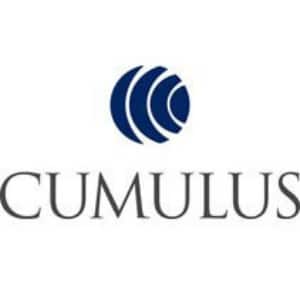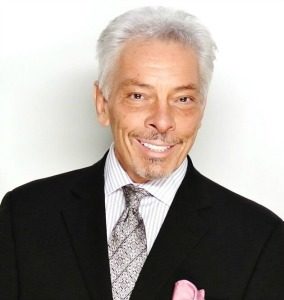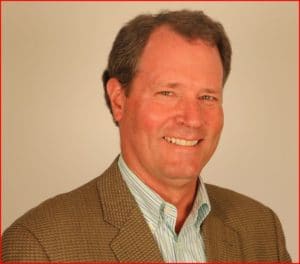
Since Mary Berner took over as Cumulus Media CEO nearly two years ago, one of the company’s main goals has been to improve the ratings. After all, Cumulus owns quite a few of radio’s most recognizable brands, including WPLJ and WABC in New York, WLS in Chicago, KGO in San Francisco, and WMAL in Washington, DC.
Overall, Cumulus owns 447 radio stations in 90 markets, and the company says that before the CEO change, ratings had been in steady decline for four consecutive years. In the August 14 issue of Radio Ink Magazine, we spoke with Cumulus EVP/Content & Programming Mike McVay and EVP/Operations and Co-Head Office of Programming Bob Walker about the changes that were made and the progress they are seeing. Here’s an excerpt from that interview.
RADIO INK: Let’s talk about some of the iconic radio brands Cumulus owns.
 MIKE MCVAY: Let’s talk outside the lines. When Mary Berner first walked into Cumulus, at the very first meeting we had, she sat down and said “programming is the oxygen of Cumulus.” We immediately put that statement on signs and posted it all over the walls, up and down the hallways at Cumulus HQ. That really was the start of a revolution and that’s when I saw the company culture start to change. And so our objective was not to just look at our iconic brands, but to look at all of our radio stations and the structure of how we were programming versus how we wanted to program. We were operating as a command and control company where Corporate told the local programmers how to program and it was clear it wasn’t working. So, one of the first things we did was give the power back to the local markets and create the Office of Programming. The Office of Programming is led by me, focusing on anything that comes out of the speakers, as I like to say, and Bob Walker, focusing on the financial and administrative side of the business. We have our specific lanes but by creating the OP, we have the perfect combination of left-side and right-side brain so that creative and business are both considered when making major decisions. Our work is ongoing. We have now developed an analysis team, we’re reeducating and retraining the corporate programming staff and employing additional new corporate PDs – all resources to help the local markets program their stations.
MIKE MCVAY: Let’s talk outside the lines. When Mary Berner first walked into Cumulus, at the very first meeting we had, she sat down and said “programming is the oxygen of Cumulus.” We immediately put that statement on signs and posted it all over the walls, up and down the hallways at Cumulus HQ. That really was the start of a revolution and that’s when I saw the company culture start to change. And so our objective was not to just look at our iconic brands, but to look at all of our radio stations and the structure of how we were programming versus how we wanted to program. We were operating as a command and control company where Corporate told the local programmers how to program and it was clear it wasn’t working. So, one of the first things we did was give the power back to the local markets and create the Office of Programming. The Office of Programming is led by me, focusing on anything that comes out of the speakers, as I like to say, and Bob Walker, focusing on the financial and administrative side of the business. We have our specific lanes but by creating the OP, we have the perfect combination of left-side and right-side brain so that creative and business are both considered when making major decisions. Our work is ongoing. We have now developed an analysis team, we’re reeducating and retraining the corporate programming staff and employing additional new corporate PDs – all resources to help the local markets program their stations.
RADIO INK: What was going on before the Office of Programming was created?
MIKE MCVAY: As I said, the company was very much a command-and-control type of organization and so what Mary did was to work with the leadership team to help us become the company we wanted to be. The leadership team created the acronym “FORCE,” which stands for Focused, Responsible, Collaborative, and Empowered. Then we went about making those words mean something. For the OP, our Focus was on turning around the ratings of the station group. As a company we saw a steady decline in ratings for four years. We worked collaboratively with the market managers and the market PDs to help them succeed. The programmers are now held responsible for their stations’ ratings because we empowered them do their jobs. If you’re going to hold them responsible, you have to empower them, and if you’re going to empower them, you have to hold them responsible. And it’s working. Our ratings are on the upswing. She’s playing Money Ball. If you have watched the movie Money Ball, you will “get it.” It is a movie about the Oakland A’s baseball team and their manager Billy Bean. He hired an analyst, and based on the success of the team in the late-90s to early-2000s, everyone began to look at baseball differently. Up ‘til Billy Bean started playing money ball, everybody looked at batting average as the metric to gauge a player’s ability. A player who had a .333 batting average was seen as an amazing player. There aren’t a lot of those players available for smaller-market baseball teams. Bean started looking at batting average as only one of the rulers used to measure success. He changed the metric to on-base percentage. You have to get on base to score. There are several ways to get on base. You get a hit, a walk, hit by a ball, or the catcher drops the ball on strike three and the runner safely gets to first base. So on-base percentage became the new metric. What Mary did was to empower us to create the Office of Programming. I took many of the things I learned as a consultant and changed the corporate programmer’s roles from being “the bosses of the PDs” to being consultant-like. The PDs report to their market managers and the VP/Formats are specialists who take a consultant-like approach. We have a level between the VP/Formats and the stations. Those are VPPOs aka Vice President Programming Operations. They have buckets of markets and take a more global view to programming. From the standpoint of analysis, in the same way Billy Bean figured out that on-base percentage was better than batting average, we hired Dr. Ed Cohen, who is a former Neilson/Arbitron employee. We hired Ralph Cipolla, who owns a diagnostic company called Airplay GPS. We promoted our own internal researcher, Val Garris, and refocused him on market research, music research, content analysis, and another perspective on rating research. Bob oversees our analysts and he works with the team in maximizing whatever rules Neilson gives us for diaries and PPM markets.

BOB WALKER: To answer your questions about the stimulus of the Office of Programming, I think Mike described it well. The biggest shift was from local programmers reporting to corporate programmers to now reporting to their own local market managers. All of the resources in the Office of Programming team shifted 180 degrees to be in support of the programmers and managers in the local markets. That’s purposeful as it uses the C of FORCE as we collaborate in moving the ratings forward.
We’ll have more from our interview with Mike McVay and Bob Walker later this week. And to subscribe to Radio Ink in time to receive the August 14 issue delivered to your digital device, GO HERE.






Speaking as a revenue-focused broadcaster, it’s critical, that in ratings-sensitive and non-ratings sensitive markets, that we all act on the fact that programming is the oxygen that breathes life into the relationships between our audiences and our advertisers.
Congratulations to Cumulus in moving forward with a total culture change; evidenced through increasingly servicing the needs of those on the front lines of broadcasting, by valuing people as your most important asset.